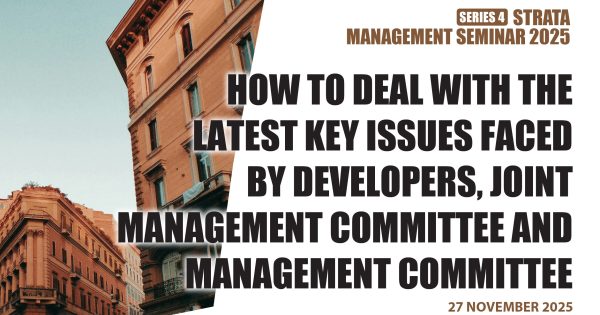CASE UPDATE: DATUK BANDAR KUALA LUMPUR V. PERBADANAN PENGURUSAN TRELLISES & ORS AND OTHER APPEALS [2023] 5 CLJ 167

FACTS:
This case relates to Taman Rimba Kiara, a public park located within Taman Tun Dr Ismail (TTDI). In this case the neighbouring properties and persons sought to quash the Development Order (which granted planning permission for the construction of a proposed development of 1 block of affordable apartment and 8 blocks of serviced apartments in Taman Rimba Kiara) via judicial review.
The central issue in this case is whether the Development Order issued by Datuk Bandar which changes the original land use of Taman Rimba Kiara in the Structure Plan from “public use” to “residential” is wrong in law.
ISSUES:
“Slavish compliance” is required in relation to Statutory Development Plan (i.e: KL Structure Plan 2004)
Statutory Development Plan is a plan that is required to be gazetted as required by the Federal Territory (Planning) Act 1982 (“FTA”). FTA mandates process of public participation, which ensures the inclusion of the public’s views on the proposed plan. KL Structure Plan 2020 was gazetted and having force of law.
Non-conformity with the structure plan
By construing s. 22(4)(a) of the FTA read together with the definition of “development plan” in s. 2 of the FT Act whether literally or purposively, it is held that KL Structure Plan cannot be ignored.
(a) The fact that these development plans are set out in the statute in express terms requiring compliance means that they cannot be equated to policies which require no such strict compliance.
(b) It is not possible to utilize the term ‘policy’ or series of policies to circumvent or obviate the need to comply with statute.
The Federal Court further sets out the rational for strict compliance with the statutory development plans as regard that such required adherence to the statutory plan as “slavish compliance”:
“The statutory force of development plans such as the structure plan which, in point of fact, does require “slavish compliance” ensures that citizens comprehend at the outset what their neighbourhood will develop into in the near future, whether the character of their neighbourhood as they now know it, will or will not, be preserved. It assures citizens of the nature of their locality for a specific period of time in the future.”
FTA provides an opportunity at the outset for all objections to be heard prior to the adoption and gazettement of the KL Structure Plan.
The Use of Comprehensive Development Plan (CDP)
The Federal Court held that Taman Rimba Kiara which falls outside the CDP would be regulated by Statutory Development Plan. The continued use of the CDP was particularly incongruous and unsuitable as Taman Rimba Kiara does not even fall within the area delineated by that plan
The use of the CDP is not legally tenable despite it being expressly mentioned in the FTA, as its purpose was to provide continuity during the transition period when the structure plan and local plan were being developed and gazetted.
It does not sanction the deferring or suspension of the gazetting of any statutory development plan to provide a basis to revert to the use of the outdated maps under repealed legislation on a continued basis, extending well over a decade or two.
Exercise of Discretion by the Datuk Bandar is bad in law
As such, the reliance on the CDP by Datuk Bandar to grant development order for a development area outside the CDP areas is fundamentally erroneous in law. There is no basis in law for the Datuk Bandar to rely on s. 22(4) FT to justify the use of the CDP. All lands falling outside of the CDP would be regulated by the statutory development plan.
Datuk Bandar erred in relying on the transitional or savings provision and ignoring the statutory structure plan in exercising his discretion:
(a) To grant the Impugned Development Order.
(b) Continued to give weight to the CDP notwithstanding that it conflicted directly with the KL Structure Plan. In this context, it is also important to bear in mind the fact that the local plan was already in existence although not gazetted.
The use of the CDP was wrongly relied on some 35 years after the introduction of the structure plan system (from the date of coming into force of the FTA versus the date when the Impugned Development Order was granted). In other words, Section 22 FTA has been contravened.
This in itself renders the exercise of discretion by the Datuk Bandar invalid and renders such exercise an illegality.
JMB and MC does not have locus standi to file judicial review to represent each individual parcel proprietor or lessee in their individual condominiums for matters other than common property
The Federal Court took note that Joint Management Body (“JMB”) and Management Corporation (“MC”) are statutory corporations. Their purpose of incorporation is the maintenance and a management of strata property under them. In this regard, their general duties and powers are provided for in Sections 21(1) and (2), and 59(1) and (2) of the Strata Management Act 2013 (“SMA 2013”).
There is nothing in the relevant legislation that expressly allows JMB and MC to file these judicial review applications in their own right and in a representative capacity for the owners and residents of the property to quash the development order made by the Datuk Bandar in respect of the subject land.
The Federal Court held that JMB and MC:
(a) cannot act beyond that which is authorised by the specific legislation creating them, albeit expressly or impliedly.
(b) does not possess the capacity to commence legal proceedings in their own right and in a representative capacity for the owners and residents of the property to quash the development order made by the Datuk Bandar in respect of the subject land. This is because it has not been granted such capacity or power under the statute. Such a power or capacity cannot be implied under or into Section 21(1)(i) SMA:
“… (i) to do such things as may be expedient or necessary for the proper maintenance and management of the buildings or lands intended for subdivision into parcels and the common property.”
(c) is not an entity that can be said to be an ‘adversely affected’ person under the O. 53 read in the context of the FT Act, as it has no capacity under the law.
The Federal Court further interpreted the MC’s rights with respect to Sections 143(2) and (3) of the SMA conferred on the joint management body and the management corporation is specifically in relation to proceedings for or in respect of common property and no more. The Federal Court answered the following questions of law in the negative.
TAKEAWAY:
Notwithstanding that Development Order was granted by the local authorities to allow development for certain area and/or land, it is always prudent to engage with lawyers at the initial stage of the development to conduct due diligence against the validity of the Development Order to avoid the same being challenged and declared illegal years down the road.
From the JMB and MC’s points of view, this Federal Court decision once again served as a reminder that the powers of JMB and MC are restricted and circumscribed by the four corners of the SMA 2013. This is so even in light of the seemingly wide provision of Section 21(1)(i) of the SMA 2013.


